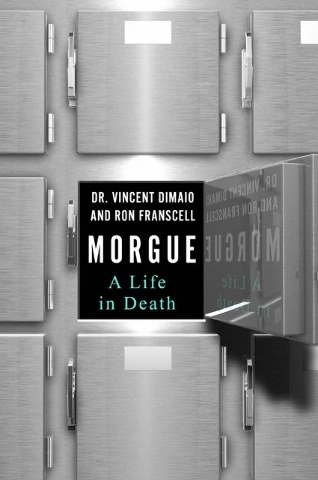
What happened?
We blurt it out without thinking; its a common question when someone has died unexpectedly. What happened, where did it happen, why, how…?
Knowing the answer can help make sense of the senselessness of death. And in the new book Morgue: A Life in Death by Dr. Vincent Di Maio and Ron Franscell, knowing what happened could lead to a conviction.
Even as a little boy, Vincent Di Maio assumed he would become a doctor.
It was not a conscious decision, he says, but many family members had taken that route so he entered medical school, which he detested.
When it was time to finally choose a specialty, he remembered how his father (also a physician) had dragged him to various New York City morgues on his rounds. Di Maio was comfortable with and fascinated by death and corpses. He chose pathology, too.
Pathologists, says Di Maio, are doctors doctors but the science itself is imperfect. Most coroner systems dont produce quality work, he claims but yet, theyve solved many, many crimes. The work isnt nearly as glamorous as TV makes it, but pathology has answered all kinds of questions about death.
That doesnt mean that it doesnt affect its practitioners.
Di Maio says that pathologists learn not to let violence bother them. You cant live expecting everyone to be… a psychopath, he says, and he learned early that What I have on the tray [during an autopsy] is not a person but a body ….The person, the soul, is gone. In his long career, Di Maio has seen his share of dead bodies, and hes solved a lot of crimes – some of them, decades old.
In Maryland, he weighed in on the deaths of multiple infants by their mother.
I am angry, he says, that I still dont know her true death toll.
He was involved in the solving of a civil-rights-era bombing. He was there at the last exhumation of Lee Harvey Oswald, and he consulted on the Phil Spector trial. He solved a few secrets and puzzles. He even saved a man from capital punishment.
Overall, he says, when looking at forensic evidence, its all about reasonable doubt.
In matters of death and life, thats our only moral standard.
There was one mistake I made with Morgue: I had it by my bedside.
Not only did authors Vincent Di Maio and Ron Franscell keep me up reading way past my bedtime, but they also kept me awake with real-life gruesomeness and tales of murder and mayhem solved.
Yes, there are times when a strong stomach is required to proceed, but theres also an element of cant-look-away, too. Di Maios stories are well-told and true crime fans may recognize them; if so, youll also enjoy knowing how those cases were closed and buried.
Sensitive readers, know that this is probably not a book for you. Nope, but CSI lovers and true crime fans will be overjoyed with it, so get your hands on Morgue. Miss it, and youll forever wonder what happened.
Terri Schlichenmeyer has been reading since she was three years old and never goes anywhere without a book. She lives in Wisconsin.